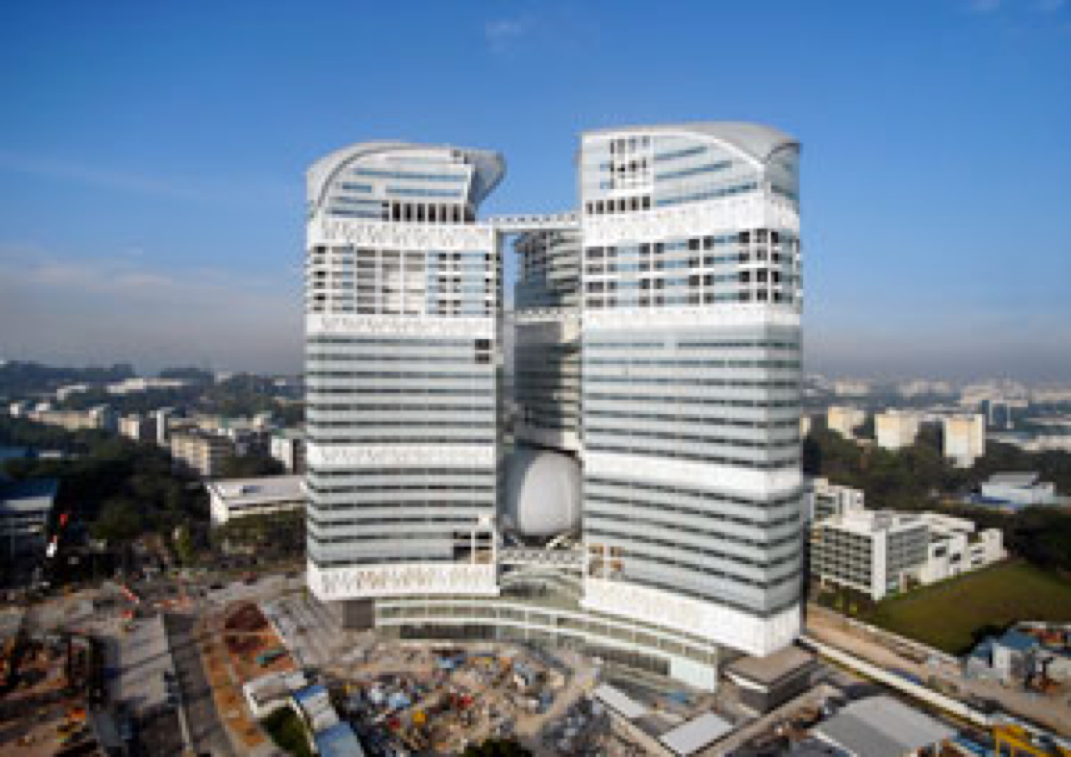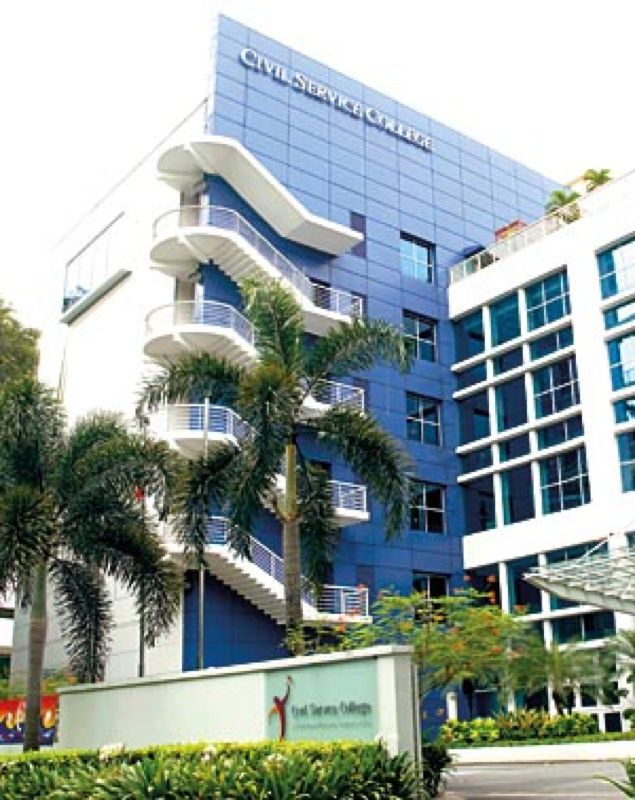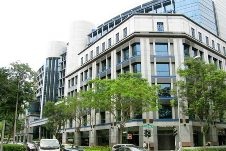“If you plan for one year, plant rice. If you plan for ten years, plant trees. If you plan for 100 years, educate mankind.”
-- Chinese proverb
If I have learned anything from the last 24 hours of my Fellowship, it’s that Singapore’s incredible success story is no accident. To those who say that the hurdles are too large for a city like Philadelphia to become the leading center of multinational business in the United States, I would suggest they look at Singapore. Upon gaining independence from Malaysia in 1963, Singapore was a small island with no resources, a largely uneducated population and a GDP of approximately USD $512 per person. 45 years later and that GDP was US$36,537 and Singapore was an economic powerhouse and a hub for multinational businesses’ Asia operations. To put that into context, during that same period, Malaysia’s GDP per capita expanded at one-third the pace, raising GDP per capita from US$335 in 1965 to US$6,975 in 2009. So how did Singapore do it? There are many answers to that question, but many of the answers start with one premise – planning.
The last 24 hours have been a whirlwind – meeting with members of Singapore’s Economic Development Board (the “EDB”, the statutory body tasked with encouraging foreign direct investment in Singapore), SPRING Singapore (the agency tasked with developing small to medium sized businesses in Singapore – whether foreign or domestic), JTC Corporation (the agency that is tasked with planning and developing the industrial landscape in support of Singapore's economic advancement) and the Agency for Science, Technology and Research (A*Star). I also met with senior executives of two companies (International SOS – a multinational company founded in Singapore by a group of Frenchmen, and Fortis – a multinational healthcare services company founded in India but with a major presence in Singapore) and met with Wong Meng Meng, founder of the largest law firm in Singapore and until recently President of the Law Society of Singapore. I was also taken to lunch by a group of past Eisenhower Fellowship winners from Singapore. One thing is clear from all of these meetings; Singapore planned its development and continues to do so today – for the short term, medium term and long term. How many communities have a 20 year plan? More important, there is a well coordinated machine of efforts in all parts of the government with the common task of developing Singapore as a leading economic center in the world.
In business today, there is a popular concept called a BHAG – a Big Hairy Audacious Goal. These are goals that seem nearly impossible but that companies set as a “stretch goal”. Well Singapore deserves credit for not only creating what may have been the world’s first BHAG, but also achieving it. More than one interviewer credited Singapore’s planned coordination and execution of its difficult plan as being borne from the desperation of a small country. But when one probes this concept, what that really meant is that because the stakes were so high, the country had to focus intensely on meeting its plan by paying attention to trends, and planning accordingly.
One factor that helps Singapore achieve these ambitious goals is the coordination and single-minded focus of all government agencies. Unlike what one sees in the United States or most parts of the world, in Singapore the government agencies are extremely linked. For example, they meet together regularly so that the EDB can talk about the types of multinational companies looking at Singapore and those they want to attract, so that the JTC can develop the industrial park to support that industry, so that Spring can make outreach to these companies (and in particular to their small and medium sized suppliers) to help them develop, and so that A*STAR can focus on research and development in fields that matter to these industries, all in a concerted effort to create the right environment for an industry to thrive. As one interviewer put it – “[t]his isn’t really investment promotion; it’s industry investment.”
What was also fascinating was the clarity of the brand that is “Singapore” among all the various individuals I met. This isn’t a brand that the country wanted to create mentally by advertizing in print media. It’s a vision they created for Singapore, and then achieved, that resulted in a brand. In other words, they created it through…planning. In brief, that brand is:
Trust – Singapore is a reliable place to do business, with little or no corruption
Knowledge – they have a strong knowledge base and highly educated workforce (both native and expatriate)
Connectedness – they are a physical hub for the Asia Pacific region and have a strong history of trade and transportation
Life – living and working in Singapore provides a good life – it’s safe and clean, there is good shopping, fine restaurants and culture (which more so than in the West, is fairly uncommon in Asia)
The government makes a concerted effort to maintain each of the above in their plans – whether it’s by keeping Singapore Airlines and their airport as high quality as possible to promote their “hub” status, or by making huge investments in education and R&D, or by heavy enforcement and consistency in the law promoting intellectual property rights and criminalizing corruption.
All the planning in the world, however, won’t be effective without coordinated support for the plan and individuals working tirelessly to bring that plan to fruition. In Singapore, the agencies tasked with the various aspects described above not only meet regularly and coordinate activities, they cross-fertilize. As an example, the former Chair of the EDB used to work for A*STAR and vice versa. The CEO of JTC used to work at the EDB. They not only meet to coordinate, but their respective leaders are all colleagues and even past employees of each other’s agencies. They also avoid becoming too insular by inviting private companies to sit down and tell them what they need or how the government can better help on a regular basis. They do this in group settings that are industry-based, as well as in one-on-one meetings. I will admit that I was surprised to get an e-mail from members of the EDB who heard I was coming to Singapore and so thought it would be a good opportunity to discuss my company’s progress in Singapore since we entered the market a few years ago and to see how they can help. The lawyer in me was immediately suspicious (since it’s rarely a good thing to have a local government request a meeting) but in this case it was exactly as represented. The meeting was a pleasure and they really wanted to see how they could help. As described by one private sector interviewee:
“You can have an open dialogue with the government here, and it’s not confrontational or suspicious. Where else can you sent up a meeting with the tax authorities in which they will sit down with you and walk through your taxes with you and explain how to calculate them.”
That kind of trust can only be built with experience, but the government also puts its money where its mouth is. For example, A*STAR is currently in its 5th 5 year plan. This is a S$ 16.1 billion (or about USD $13 billion) plan focused on attracting R&D talent to Singapore, building research institutes and creating technology that benefits the industries in fulfillment of the overall plan for Singapore’s development. This includes launching a new industry project every 1.5 hours, creating 10-12 new companies a year and spinning off about 1 new company a month.
So as I reflect on what I have learned in the context of the greater Philadelphia region, I wonder if we have a 20 year, a 5 year or even a 1 year plan that is shared cross government agencies and that focuses on the economic development of our region through coordinated attraction and development of foreign direct investment. So I’ll end this entry the way I began, with a Chinese proverb:
“If you don’t know where you’re going, any road will get you there.”
-- Chinese proverb
If I have learned anything from the last 24 hours of my Fellowship, it’s that Singapore’s incredible success story is no accident. To those who say that the hurdles are too large for a city like Philadelphia to become the leading center of multinational business in the United States, I would suggest they look at Singapore. Upon gaining independence from Malaysia in 1963, Singapore was a small island with no resources, a largely uneducated population and a GDP of approximately USD $512 per person. 45 years later and that GDP was US$36,537 and Singapore was an economic powerhouse and a hub for multinational businesses’ Asia operations. To put that into context, during that same period, Malaysia’s GDP per capita expanded at one-third the pace, raising GDP per capita from US$335 in 1965 to US$6,975 in 2009. So how did Singapore do it? There are many answers to that question, but many of the answers start with one premise – planning.
The last 24 hours have been a whirlwind – meeting with members of Singapore’s Economic Development Board (the “EDB”, the statutory body tasked with encouraging foreign direct investment in Singapore), SPRING Singapore (the agency tasked with developing small to medium sized businesses in Singapore – whether foreign or domestic), JTC Corporation (the agency that is tasked with planning and developing the industrial landscape in support of Singapore's economic advancement) and the Agency for Science, Technology and Research (A*Star). I also met with senior executives of two companies (International SOS – a multinational company founded in Singapore by a group of Frenchmen, and Fortis – a multinational healthcare services company founded in India but with a major presence in Singapore) and met with Wong Meng Meng, founder of the largest law firm in Singapore and until recently President of the Law Society of Singapore. I was also taken to lunch by a group of past Eisenhower Fellowship winners from Singapore. One thing is clear from all of these meetings; Singapore planned its development and continues to do so today – for the short term, medium term and long term. How many communities have a 20 year plan? More important, there is a well coordinated machine of efforts in all parts of the government with the common task of developing Singapore as a leading economic center in the world.
In business today, there is a popular concept called a BHAG – a Big Hairy Audacious Goal. These are goals that seem nearly impossible but that companies set as a “stretch goal”. Well Singapore deserves credit for not only creating what may have been the world’s first BHAG, but also achieving it. More than one interviewer credited Singapore’s planned coordination and execution of its difficult plan as being borne from the desperation of a small country. But when one probes this concept, what that really meant is that because the stakes were so high, the country had to focus intensely on meeting its plan by paying attention to trends, and planning accordingly.
One factor that helps Singapore achieve these ambitious goals is the coordination and single-minded focus of all government agencies. Unlike what one sees in the United States or most parts of the world, in Singapore the government agencies are extremely linked. For example, they meet together regularly so that the EDB can talk about the types of multinational companies looking at Singapore and those they want to attract, so that the JTC can develop the industrial park to support that industry, so that Spring can make outreach to these companies (and in particular to their small and medium sized suppliers) to help them develop, and so that A*STAR can focus on research and development in fields that matter to these industries, all in a concerted effort to create the right environment for an industry to thrive. As one interviewer put it – “[t]his isn’t really investment promotion; it’s industry investment.”
What was also fascinating was the clarity of the brand that is “Singapore” among all the various individuals I met. This isn’t a brand that the country wanted to create mentally by advertizing in print media. It’s a vision they created for Singapore, and then achieved, that resulted in a brand. In other words, they created it through…planning. In brief, that brand is:
Trust – Singapore is a reliable place to do business, with little or no corruption
Knowledge – they have a strong knowledge base and highly educated workforce (both native and expatriate)
Connectedness – they are a physical hub for the Asia Pacific region and have a strong history of trade and transportation
Life – living and working in Singapore provides a good life – it’s safe and clean, there is good shopping, fine restaurants and culture (which more so than in the West, is fairly uncommon in Asia)
The government makes a concerted effort to maintain each of the above in their plans – whether it’s by keeping Singapore Airlines and their airport as high quality as possible to promote their “hub” status, or by making huge investments in education and R&D, or by heavy enforcement and consistency in the law promoting intellectual property rights and criminalizing corruption.
All the planning in the world, however, won’t be effective without coordinated support for the plan and individuals working tirelessly to bring that plan to fruition. In Singapore, the agencies tasked with the various aspects described above not only meet regularly and coordinate activities, they cross-fertilize. As an example, the former Chair of the EDB used to work for A*STAR and vice versa. The CEO of JTC used to work at the EDB. They not only meet to coordinate, but their respective leaders are all colleagues and even past employees of each other’s agencies. They also avoid becoming too insular by inviting private companies to sit down and tell them what they need or how the government can better help on a regular basis. They do this in group settings that are industry-based, as well as in one-on-one meetings. I will admit that I was surprised to get an e-mail from members of the EDB who heard I was coming to Singapore and so thought it would be a good opportunity to discuss my company’s progress in Singapore since we entered the market a few years ago and to see how they can help. The lawyer in me was immediately suspicious (since it’s rarely a good thing to have a local government request a meeting) but in this case it was exactly as represented. The meeting was a pleasure and they really wanted to see how they could help. As described by one private sector interviewee:
“You can have an open dialogue with the government here, and it’s not confrontational or suspicious. Where else can you sent up a meeting with the tax authorities in which they will sit down with you and walk through your taxes with you and explain how to calculate them.”
That kind of trust can only be built with experience, but the government also puts its money where its mouth is. For example, A*STAR is currently in its 5th 5 year plan. This is a S$ 16.1 billion (or about USD $13 billion) plan focused on attracting R&D talent to Singapore, building research institutes and creating technology that benefits the industries in fulfillment of the overall plan for Singapore’s development. This includes launching a new industry project every 1.5 hours, creating 10-12 new companies a year and spinning off about 1 new company a month.
So as I reflect on what I have learned in the context of the greater Philadelphia region, I wonder if we have a 20 year, a 5 year or even a 1 year plan that is shared cross government agencies and that focuses on the economic development of our region through coordinated attraction and development of foreign direct investment. So I’ll end this entry the way I began, with a Chinese proverb:
“If you don’t know where you’re going, any road will get you there.”



 RSS Feed
RSS Feed